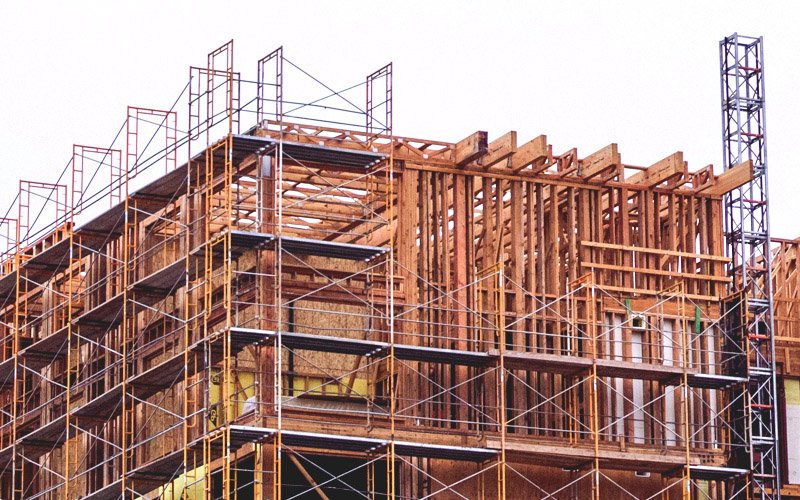
2017 Divi Lead
$19,345
Our company, DPF-Solutions, offers tuning services for Cummins, Detroit Diesel, Volvo, Mack, Caterpillar, and Paccar engines.
At DPF-Solutions, we specialize in providing expert tuning services tailored specifically for a wide range of diesel engines commonly found in heavy-duty trucks. Our team understands the unique characteristics and requirements of engines from leading manufacturers such as Cummins, Detroit Diesel, Volvo, Mack, Caterpillar, and Paccar. Whether you are looking to enhance your truck’s performance, improve fuel efficiency, or address emissions system issues, our tuning solutions are designed to meet your needs.
Our services include custom ECU programming, delete tuner installations, and optimization of engine parameters to ensure your diesel truck runs smoothly and efficiently after any modifications. We use advanced diagnostic tools and the latest software to deliver precise tuning that maximizes power and torque while maintaining reliability.
By choosing DPF-Solutions, you gain access to industry-leading expertise and support for your diesel truck modification projects. We stay up to date with the latest developments in emissions regulations and tuning technology to provide compliant and effective solutions. Whether you own a Ford Powerstroke, Dodge Ram Cummins, Duramax, or other diesel truck, our tuning services can help you achieve the performance improvements you desire while minimizing potential issues.
In addition to tuning, we also offer consultation services to help you understand the implications of emissions system deletes and guide you through the legal and technical considerations. Our commitment is to provide transparent, reliable, and high-quality service that empowers truck owners to make informed decisions about their vehicle modifications.
The Pros and Cons of a Delete Diesel Truck: What You Need to Know
Modifying a diesel truck’s emissions system, commonly known as “deleting,” remains one of the most controversial yet popular alterations in the diesel performance world. For many truck owners, the promise of increased power, better fuel economy, and reduced maintenance costs makes delete modifications tempting. However, these benefits come with significant legal, environmental, and warranty implications that shouldn’t be overlooked.
In this comprehensive guide, we’ll explore what delete diesel truck modifications entail, the potential benefits and drawbacks, and everything you need to consider before making such significant changes to your vehicle.
Introduction to Diesel Truck Modifications
Diesel truck modifications, particularly those involving emissions system components, represent a significant decision for any truck owner. The term “delete” refers to the removal of emissions control devices such as the Diesel Particulate Filter (DPF), Exhaust Gas Recirculation (EGR) system, and Selective Catalytic Reduction (SCR) system that uses Diesel Exhaust Fluid (DEF).
These emissions systems were mandated by the Environmental Protection Agency (EPA) to reduce harmful pollutants from diesel exhaust. While they serve an important environmental purpose, many truck owners find these systems problematic for several reasons:
-
Reduced fuel efficiency
-
Decreased engine performance
-
Increased maintenance costs
-
Reliability issues leading to expensive repairs
-
Power limitations
Delete modifications aim to address these concerns by removing the restrictive emissions components and reprogramming the engine’s computer to operate without them. However, before pursuing such modifications, it’s crucial to understand all components involved and the implications of their removal.
Understanding Emissions System Components
Before making any modification decisions, it’s essential to understand exactly what components make up a diesel truck’s emissions system and the purpose each serves in reducing harmful pollutants.
Diesel Particulate Filter (DPF)
The DPF captures soot and particulate matter from the exhaust stream. When this filter becomes full, the truck initiates a “regeneration” process that burns off accumulated particulates. Common issues with DPF systems include:
-
Clogging that requires frequent regeneration cycles
-
Failed regeneration attempts leading to limp mode
-
Reduced exhaust flow causing backpressure
-
Decreased fuel economy during regeneration
Exhaust Gas Recirculation (EGR) System
The EGR system recirculates a portion of exhaust gases back into the combustion chamber to reduce nitrogen oxide (NOx) emissions. Problems commonly associated with EGR systems include:
-
Carbon buildup in the intake manifold
-
EGR cooler failures
-
Reduced engine efficiency
-
Increased engine operating temperatures
Selective Catalytic Reduction (SCR) and DEF System
Modern diesel trucks use SCR systems with DEF (a urea-based fluid) to convert NOx emissions into harmless nitrogen and water vapor. Issues with this system include:
-
Regular DEF fluid refills required
-
DEF fluid freezing in extremely cold weather
-
Failed DEF pumps or injectors
-
System faults triggering limp mode
These emissions components work together to significantly reduce harmful pollutants. A properly functioning system can reduce particulate matter by 85-95% and NOx emissions by up to 90%. However, the complexity of these systems creates multiple potential failure points that can be expensive to repair.
Delete Tuner Options and Considerations
Delete tuners are specialized programming devices that modify your truck’s engine control parameters to function properly after emissions components are removed. These devices are essential for a delete diesel truck configuration, as they prevent check engine lights and performance issues that would otherwise occur when emissions components are disconnected.
Connection via Nexiq USB link
The Nexiq USB link is a widely used diagnostic interface that enables communication between a diesel truck’s electronic control unit (ECU) and a tuning device or computer. This connection is essential for performing delete tuner installations, custom ECU programming, and advanced diagnostics. The Nexiq USB link supports multiple protocols and is compatible with various software platforms, making it a versatile tool for diesel truck modifications.
Using the Nexiq USB link, technicians can access real-time data, read and clear error codes, and upload custom tuning files that adjust engine parameters to optimize performance after emissions system deletes. The reliable and fast data transfer provided by this interface ensures accurate programming and reduces the risk of errors during the tuning process.
Moreover, the Nexiq USB link facilitates troubleshooting by allowing users to monitor sensor outputs and system statuses while the engine is running. This capability is particularly valuable when verifying that delete tuners are functioning correctly and that no unintended issues arise post-installation.
In summary, the Nexiq USB link acts as a critical bridge between the vehicle’s ECU and the tuning software, enabling precise control over engine behavior and ensuring that delete diesel truck modifications are implemented safely and effectively.
What Delete Tuners Modify
These tuners alter several critical engine parameters:
-
Disable DPF regeneration cycles
-
Turn off EGR flow
-
Eliminate DEF system requirements
-
Adjust fuel timing for improved combustion
-
Modify rail pressure for better fuel atomization
-
Increase boost pressure for more power
-
Remove torque limiters for improved performance
Potential Issues with Delete Tuners
While delete tuners offer performance advantages, they can create complications:
-
Some delete tunes cause excessive smoke
-
Improperly configured tunes may cause engine damage
-
Truck may still enter limp mode if sensors report certain fault conditions
-
Error codes might still appear for non-emissions related issues
Most importantly, these tuners modify your vehicle in ways that violate federal emissions regulations, creating potential legal exposure that must be seriously considered.
Service Title
Lorem ipsum dolor sit amet, consectetur adipiscing elit. Phasell sed nibh dignissim, cursus tellus sit amet, ultrices mauris. Aliquam
Service Title
Lorem ipsum dolor sit amet, consectetur adipiscing elit. Phasell sed nibh dignissim, cursus tellus sit amet, ultrices mauris. Aliquam
Service Title
Lorem ipsum dolor sit amet, consectetur adipiscing elit. Phasell sed nibh dignissim, cursus tellus sit amet, ultrices mauris. Aliquam
Service Title
Lorem ipsum dolor sit amet, consectetur adipiscing elit. Phasell sed nibh dignissim, cursus tellus sit amet, ultrices mauris. Aliquam
Service Title
Lorem ipsum dolor sit amet, consectetur adipiscing elit. Phasell sed nibh dignissim, cursus tellus sit amet, ultrices mauris. Aliquam
Service Title
Lorem ipsum dolor sit amet, consectetur adipiscing elit. Phasell sed nibh dignissim, cursus tellus sit amet, ultrices mauris. Aliquam

Remote deletion via TeamViewer or AnyDesk
Remote deletion services have become increasingly popular for diesel truck owners seeking convenient and efficient ways to perform delete tuner installations and ECU reprogramming without visiting a physical shop. Using remote desktop applications such as TeamViewer or AnyDesk, professional tuners can securely access your vehicle’s tuning device or laptop from anywhere in the world.
This method allows technicians to upload custom delete tunes, adjust engine parameters, and diagnose issues in real-time while the vehicle owner monitors the process. Remote deletion is especially beneficial for owners in remote locations or those with busy schedules who cannot easily bring their truck to a specialized tuning facility.
The process typically involves the vehicle owner connecting their tuning device or laptop to the truck’s ECU via a diagnostic interface such as the Nexiq USB link. Then, a secure remote session is established, enabling the tuner to control the software and perform all necessary modifications. Communication between the owner and technician is maintained throughout to ensure proper operation and address any concerns immediately.
While remote deletion offers convenience, it requires a stable internet connection and some technical knowledge on the owner’s part to set up the required hardware and software. Additionally, trusting a remote technician demands confidence in their expertise and professionalism.
Overall, remote deletion via TeamViewer or AnyDesk provides a flexible and effective solution for diesel truck owners looking to implement delete modifications safely and efficiently without the need for in-person visits.
DPF Delete and Its Implications
The Diesel Particulate Filter (DPF) is often the first target for deletion, as removing this component can significantly reduce exhaust backpressure and potentially increase power and fuel efficiency.
The DPF Delete Process
A DPF delete typically involves:
- Removing the physical DPF filter from the exhaust system
- Installing a straight pipe or flow-through pipe in its place
- Using a delete tuner to reprogram the ECU to prevent fault codes
- Adjusting engine parameters to optimize performance without the DPF
Performance Benefits of DPF Delete
Many truck owners report several advantages after DPF deletion:
- Increased horsepower (typically 50-100 HP depending on the platform)
- Improved fuel economy (often 2-4 MPG improvement)
- Elimination of regeneration cycles that consume extra fuel
- Reduced exhaust temperatures
- Lower maintenance costs from avoiding DPF-related repairs
Environmental Impact
The environmental consequences of DPF deletion are significant:
- Dramatic increase in particulate matter emissions (up to 95% more than with functioning DPF)
- Visible black smoke under heavy acceleration
- Increased soot deposition in the surrounding environment
- Potentially harmful air quality impacts, especially in areas with many modified trucks
The particulate matter removed by DPF systems contains numerous harmful compounds that can contribute to respiratory issues. Understanding this environmental impact is essential when weighing the benefits against the drawbacks of DPF deletion.
Legal and Warranty Considerations for Modified Trucks
Before proceeding with any emissions system modifications, truck owners need to clearly understand the legal landscape surrounding delete kits and tuners.
Federal EPA Regulations
The EPA’s stance on emissions tampering is unambiguous:
- Removing or disabling emissions equipment violates the Clean Air Act
- Selling, installing, or manufacturing delete devices is illegal
- Penalties for individuals can reach $4,819 per violation
- Commercial operations face much steeper fines, potentially reaching millions of dollars
The EPA has increased enforcement actions in recent years, targeting not just manufacturers and shops but also individual vehicle owners. Several high-profile cases have resulted in significant penalties for companies selling delete products.
State-Specific Considerations
Beyond federal regulations, state laws vary:
- Some states require emissions testing for diesel vehicles
- California’s CARB regulations are particularly strict
- Some rural areas have less stringent enforcement
- Even in states without regular testing, modified trucks can be flagged during roadside inspections
Warranty Implications
Emissions modifications have serious warranty implications:
- Delete modifications typically void manufacturer warranties
- Dealers can deny warranty claims if they determine emissions modifications contributed to a failure
- Some dealerships may refuse service on deleted trucks entirely
- Reinstalling emissions equipment for warranty service may be detected
These legal and warranty considerations represent significant risks that must be weighed against the performance benefits of delete modifications.
Alternatives to Deleting a Diesel Truck’s Emissions System
For those concerned about the legal and environmental implications of deleting, several alternatives exist that can improve performance while maintaining emissions compliance.
Emissions-Compliant Performance Modifications
Several legal modifications can enhance performance:
- High-flow air intake systems
- Upgraded intercoolers
- Emissions-compliant exhaust systems that maintain catalytic converters
- Transmission tuning for improved shift points
- Compliant tuners that optimize within legal parameters
Proper Maintenance to Prevent Issues
Many emissions system problems can be prevented with proper maintenance:
- Regular driving patterns that allow complete DPF regeneration cycles
- Using high-quality diesel fuel with proper cetane ratings
- Changing fuel filters according to manufacturer recommendations
- Addressing minor issues before they cause major failures
- Following severe-duty maintenance schedules for trucks under heavy load
Professional Diagnostic Services
Before considering deletion, consult with diesel specialists who can:
- Accurately diagnose specific emissions system issues
- Provide repair options that maintain compliance
- Offer preventative maintenance plans
- Suggest legal performance enhancements
While these alternatives may not deliver the same level of performance improvement as delete modifications, they provide enhanced capability without the legal, environmental, and warranty concerns.
Popular Diesel Truck Models for Modification
Different diesel truck platforms respond uniquely to emissions modifications, with each manufacturer’s engine design presenting specific challenges and opportunities.
Detroit Diesel DD15
The Detroit Diesel DD15 engine is a popular choice among heavy-duty truck owners due to its balance of power, fuel efficiency, and durability. Introduced in the early 2010s, the DD15 features advanced technology designed to meet stringent emissions standards while delivering strong performance. This engine utilizes a combination of EGR, DPF, and SCR systems to control emissions, which can sometimes lead to maintenance challenges and performance limitations.
Owners considering delete modifications for the DD15 should be aware that removing emissions components requires precise tuning to avoid engine issues such as limp mode, error codes, or reduced reliability. Specialized delete tuners and custom ECU programming are often necessary to ensure the engine runs smoothly after modifications. The DD15’s electronic control systems are sophisticated, meaning that delete tunes must be carefully calibrated to maintain engine health and optimize power and torque.
Despite these complexities, many DD15 owners report notable improvements in horsepower and fuel economy after performing a delete, especially when combined with supporting modifications such as upgraded exhaust systems and enhanced cooling components. However, the legal and warranty implications remain significant, and owners should thoroughly research and consider these factors before proceeding.
In addition to performance gains, a well-executed DD15 delete can reduce downtime and repair costs associated with emissions system failures. The DPF, in particular, can be prone to clogging and costly replacements, so removing it can enhance overall vehicle reliability. Nevertheless, it is crucial to work with experienced tuners familiar with Detroit Diesel engines to ensure a safe and effective delete process.
Overall, the Detroit Diesel DD15 offers a solid platform for delete diesel truck modifications, but success depends on expert tuning, quality parts, and a clear understanding of the associated risks and responsibilities.
Cummins isx 15
The Cummins ISX15 engine is one of the most popular and widely used heavy-duty diesel engines in North America, known for its robust performance and reliability. It powers a significant portion of Class 8 trucks and is favored for long-haul applications due to its strong torque output and fuel efficiency. The ISX15 incorporates advanced emissions control technology, including a Diesel Particulate Filter (DPF), Exhaust Gas Recirculation (EGR), and Selective Catalytic Reduction (SCR) systems, to comply with stringent EPA regulations.
Owners looking to modify the Cummins ISX15 often consider delete diesel truck modifications to remove these emissions components. The goal is to enhance power, improve fuel economy, and reduce maintenance issues related to emissions hardware failures. However, the complexity of the ISX15’s electronic control systems means that any delete tuner must be carefully calibrated to avoid triggering error codes or limp mode.
Popular delete tuner options for the ISX15 include custom ECU programming and commercially available tuning devices that disable the DPF regeneration process, deactivate the EGR system, and bypass the DEF system. These modifications allow the engine to run more efficiently by eliminating restrictions in the exhaust system and optimizing fuel delivery and boost pressure.
It is important to note that while the performance benefits can be significant—often resulting in horsepower gains of 50-100 HP and noticeable torque increases—these modifications come with legal risks and environmental consequences. Removing emissions systems violates federal and state laws, and owners should be aware of potential fines and warranty voidance.
Additionally, the ISX15’s sophisticated engine management requires experienced tuners who understand the nuances of Cummins engines. Improper tuning can lead to engine damage, increased smoke emissions, and reduced reliability. For those considering an ISX15 delete, consulting with professionals who specialize in Cummins tuning is essential to achieve the desired performance gains safely.
Overall, the Cummins ISX15 remains a top choice for diesel truck enthusiasts seeking powerful and reliable engines with ample aftermarket support for emissions system deletes and performance enhancements.
Volvo D13
The Volvo D13 engine is a widely respected powerplant in the heavy-duty diesel truck market, known for its durability, fuel efficiency, and advanced emissions technology. Found in many Volvo trucks and other OEM applications, the D13 features a sophisticated emissions control system that includes a Diesel Particulate Filter (DPF), Exhaust Gas Recirculation (EGR), and Selective Catalytic Reduction (SCR) with Diesel Exhaust Fluid (DEF).
Owners considering delete diesel truck modifications for the Volvo D13 often seek to improve power output and fuel economy, as well as reduce maintenance costs linked to emissions system failures. However, the D13’s integrated electronic control systems require precise tuning to ensure that the engine runs smoothly after emissions components are removed. This often involves custom ECU programming and the use of delete tuners specifically designed for the Volvo D13 platform.
Common delete modifications for the D13 include removal of the DPF and EGR systems, along with reprogramming to disable DEF system requirements. These changes can lead to noticeable horsepower and torque gains, typically in the range of 50-100 HP, and improved throttle response. Additionally, many owners report increased reliability by eliminating components prone to clogging or failure.
Despite these benefits, it is crucial to recognize the legal and environmental implications of deleting emissions systems on the Volvo D13. Like other diesel engines, such modifications violate EPA regulations and can result in fines and warranty voidance. Furthermore, the increased particulate and NOx emissions contribute to environmental pollution, raising ethical and community concerns.
For those seeking to optimize their Volvo D13 without deleting emissions systems, there are legal alternatives such as performance tuning within emissions-compliant parameters, upgraded exhaust components, and enhanced maintenance practices. Consulting with experienced Volvo diesel tuners is highly recommended to achieve the best balance of performance and compliance.
Overall, the Volvo D13 offers a solid platform for diesel truck modifications, but success depends on expert tuning, quality parts, and a clear understanding of the associated risks and responsibilities.
Benefits and Drawbacks of Diesel Truck Modifications
When weighing whether to delete your diesel truck’s emissions systems, consider both the immediate benefits and the potential long-term consequences.
Benefits of Delete Modifications
Proponents of delete modifications cite numerous advantages:
- Increased horsepower and torque (typically 50-150+ HP depending on platform)
- Improved fuel economy (2-4 MPG improvement commonly reported)
- Eliminated regeneration cycles that interrupt driving
- Reduced maintenance costs from avoiding emissions component failures
- Lower exhaust gas temperatures under load
- Improved engine longevity in some circumstances
- Enhanced towing capability and responsiveness
Drawbacks of Delete Modifications
The disadvantages are equally significant:
- Federal and state legal violations with potential for substantial fines
- Voided manufacturer warranties
- Increased environmental impact through higher emissions
- Potential resale complications in states with emissions testing
- Inability to pass emissions tests where required
- Ethical considerations regarding air quality impact
- Potential denial of service at some repair facilities
- Re-installation costs if compliance becomes necessary
Long-Term Considerations
Beyond immediate pros and cons, consider these long-term factors:
- Increasing emissions enforcement may create future challenges
- Resale value impacts vary significantly by region
- Insurance companies may have policies regarding modified vehicles
- Future emissions regulations could become even more stringent
Conclusion
A delete diesel truck modification represents a significant choice that balances performance benefits against legal, environmental, and warranty considerations. While the improvements in power, efficiency, and reliability are substantial, they come with serious legal risks and environmental impacts that cannot be dismissed.
Before making any modifications to your diesel truck’s emissions systems:
- Research your specific truck model and common issues
- Understand the federal and state legal implications
- Consider how modifications might affect warranty coverage
- Explore emissions-compliant alternatives
- Evaluate whether the performance benefits justify the potential downsides
For many truck owners, proper maintenance and legal performance modifications provide a better balance of benefits without the significant risks associated with emissions system deletion. However, each situation is unique, and thoroughly understanding all aspects of this decision is essential to making the choice that best suits your specific circumstances.
Regardless of which path you choose, consulting with diesel performance specialists who understand both the technical and legal landscape will help ensure you make the most informed decision possible about your truck’s performance and compliance.
Get In Touch
(888) 123-4562
Location
2345 Divi St
San Francisco, CA 94222
info@diviauto.com
Open Hours
Mon:10am – 5pm
Tue: 10am – 5pm
Wed: Closed
Thur: 10am – 5pm
Fri: 10am – 3pm
Sat: 10am – 3pm
Sun: Closed


